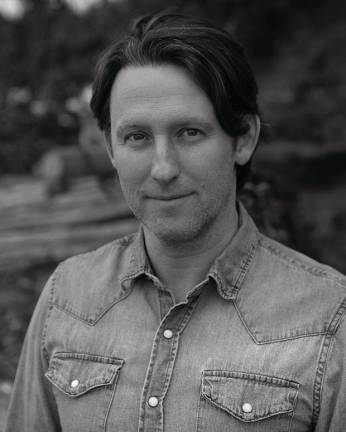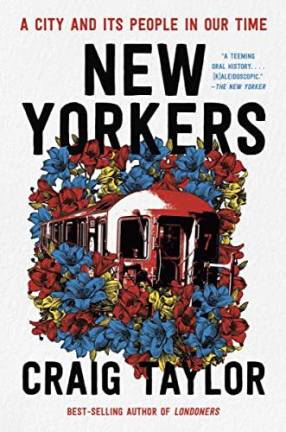Author from Small Canadian Village Captures the Beautiful Rhapsody of New Yorkers
After Canadian-born Craig Taylor published his bestselling book “Londoners,” his publisher asked him to tackle the daunting task of moving to New York City to replicate the same man and woman in the street experience in the Big Apple. Here’s how he created the same feel in our town.


As it nears its one-year anniversary in paperback in May, “New Yorkers: A City and Its People in Our Time” (W.W. Norton & Company, 2021) by Craig Taylor remains one of most urgent books written about the city in recent memory.
In 2014, following the success of his bestselling “Londoners,” Taylor was given a new assignment: move to New York and interview as many people as you can.
“New Yorkers,” which tackles such recent catastrophes as 9/11 and the coronavirus pandemic, consequently serves as both an antidote to tragedy and a time capsule of the present moment.
A rhapsodic oral history, the book features interviews with over seventy New Yorkers and sings of the city’s pain and beauty. Among the interviewees are a nurse, a 911 operator, a can recycler, and many others. Their stories are harrowing, humorous and always compelling.
The author’s feat is particularly impressive since he isn’t from New York but rather the small British Columbia village of Lantzville. Growing up there, Taylor wrote steadily and immersed himself in independent magazines. “I got involved in the local ‘zine scene when I was a teenager,” he says. “I loved that whole era in the ‘90s of making magazines.”
His efforts eventually led to “Londoners” just over a decade ago and, most recently, to “New Yorkers.” Prior to moving to New York for the project, Taylor had been interested in the city and visited a few times but the move was a significant step.
“It’s such a verbal, vocal town that it seemed like the perfect form to approach New York,” he says. “I didn’t have to say I knew everything about New York; I just had to get in the mix and listen to all of these people. Every day in New York, there are all these amazing monologues. People will turn to you on the subway and start telling you everything. I just tapped into that avalanche of words for a while.”
Over the course of about five years, he interviewed over two-hundred people and filled many notebooks. “At the beginning of one of these projects, there’s always this daunting moment where you think, ‘Oh, God. What I have done? This place is so huge.’ I was living on West 93rd and I was wandering around thinking, ‘How do I even start?’ And then you dive in and people talk to you.”
Especially impressive is the fact that Taylor released the book on the one-year anniversary of the coronavirus pandemic in March 2021, only two years ago when book tours and public readings weren’t as frequent as they are now. Still, New Yorkers had a launch party on March 23rd of that year via Zoom at Brooklyn’s Greenlight Bookstore with Taylor present and a group of actors voicing the individuals in the book.
Much of Taylor’s mastery is his ability to listen. When writing the book, he didn’t set out to write an indisputable history of New York or a kind of origin story but rather, as its subtitle indicates, a “portrait.”
Sidestepping cliché and stereotypes, the author focuses on a disparate assembly of people and lets them do the talking. In addition to the nurse and 911 operator, there is a train conductor, an elevator repairman and a police officer. Together, these individuals form the orchestra that Taylor conducts.
The book, as such sections as “Overture” and its two interludes convey, does have an aural and musical quality to it. It could be called a cacophony but it’s more so a polyphony, a multitude of voices that show Taylor—and readers—what it’s like to live in New York now.
“The speech in New York is so operatic,” he says. “It is like watching people improvise and perform. There’s this jazz-like quality of how people just jump and word-associate...It’s operatic but it’s also like an endless remix of conversation.”
Many others speak throughout the book, including “The Voice of the Brooklyn Nets” and someone Taylor calls a “Seeker,” and this multitude illustrates perhaps its greatest point: no one is an extra. There are so many lives, so many desires.
With his ear always open, Taylor relates them with deep generosity and gives New Yorkers their due.
“The speech in New York is so operatic. It is like watching people improvise and perform. There’s this jazz-like quality of how people just jump and word-associate...It’s operatic but it’s also like an endless remix of conversation.” Craig Taylor, author of “New Yorkers: A City and Its People in Our Time.”